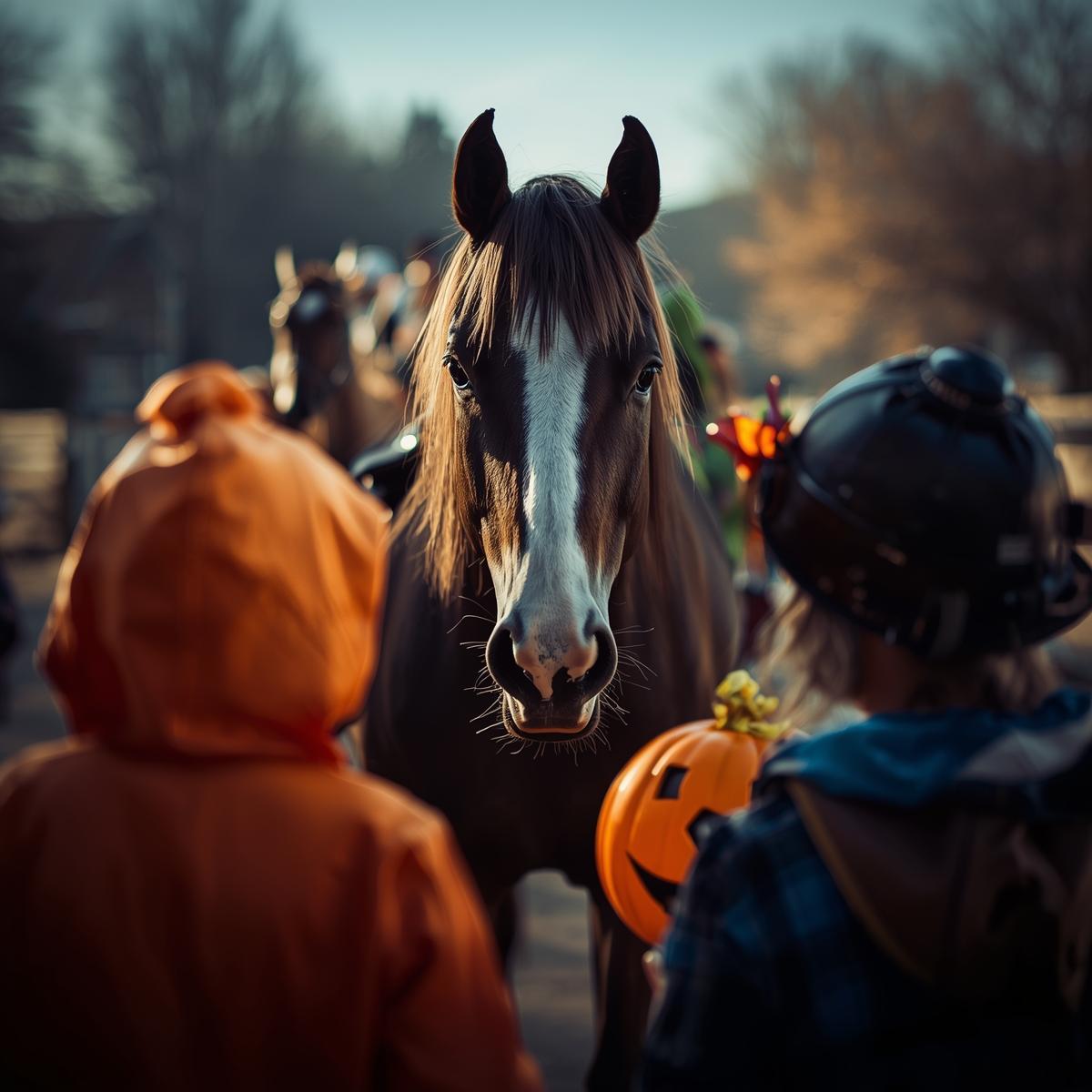The unfamiliar sights, sounds, and smells of Halloween can trigger a horse's natural "fight or flight" response, causing it to panic and bolt. This can lead to a horse running off, getting lost, or injuring itself in an attempt to escape a perceived threat.
Factors leading to disappearance
- Bolting and escape: When a horse panics, its first instinct is to run away from the perceived danger. If it's in a paddock or pasture, it may run through or jump over fences, potentially injuring itself in the process.
- Accidental release: A spooked horse could run through a gate, or an excited or mischievous prankster could open a gate, allowing a horse to wander away from its property.
- Disorientation: After running, a horse may become disoriented, unable to find its way back home, and continue to wander. It may also get tangled in unfamiliar areas or become injured in its panicked state.
To ensure a safe and stress-free Halloween for your horse, prioritize their comfort and security over elaborate decorations or events. Here are some key safety tips:
For costumes
- Know your horse. If your horse is easily spooked or has a nervous temperament, opt for a simpler costume or just stick with decorated tack that they are already comfortable with.
- Introduce costumes slowly. Acclimate your horse to any new fabrics, accessories, or sounds from the costume well in advance. Let them see, feel, and hear the costume pieces in a calm environment.
- Ensure a proper fit. Costumes should never droop, drag, or have loose pieces that could get caught on something or entangled in your horse's legs.
- Use breakaway features. For larger costume components, include features that allow the item to detach easily in an emergency, should your horse panic.
- Keep vision and movement clear. A horse's costume should never obstruct their vision or restrict their ability to move freely and safely.
- Choose safe materials. Use only nontoxic, washable paints and dyes, like water-based tempera paint. Use soft materials like fabric or leather, and avoid anything hard, sharp, or heavy.
For candy and treats
- Avoid chocolate. The chemical theobromine, found in chocolate, is toxic to horses and can cause damage to their heart, kidneys, and central nervous system.
- Moderate sugary treats. While small amounts of hard candies like peppermints or Jolly Ranchers are often safe, overindulgence can cause serious problems. Avoid sticky candies like gummy bears or taffy that could cause a choking hazard or become stuck in their teeth.
- Keep it to a minimum. Never feed your horse a whole bag of candy. If your horse has health issues like equine metabolic syndrome or Cushing's disease, it is best to skip the candy entirely and offer a low-sugar alternative.
- Provide safe treats instead. Consider horse-safe alternatives like apple or pumpkin chunks (free of candles or wax), carrots, or special horse cookies.
For the stable and barn area
- Secure your horse. To prevent spooking from trick-or-treaters or loud noises, keep your horse secured in a barn or sheltered area insulated from the noise and activity.
- Remove fire hazards. Place any decorations with lit candles or flames, including jack-o'-lanterns, far away from your horse's pathways and from hay storage. Consider using battery-operated lights as a safer alternative.
- Be aware of pranksters. Secure your property to protect against anyone who may try to harm or free animals on Halloween night.
- Clear pathways. When decorating, ensure there are no decorations, cords, or other items that a horse could get tangled in or trip on.
Stolen Horse International provides news and other resources for free on this website. As a charitable organization we survive on the kindness of people like you. Please consider donating to help fund the organization or purchasing a NetPosse ID for your horse, dog or cat to help protect your beloved animals!
Debi Metcalfe



